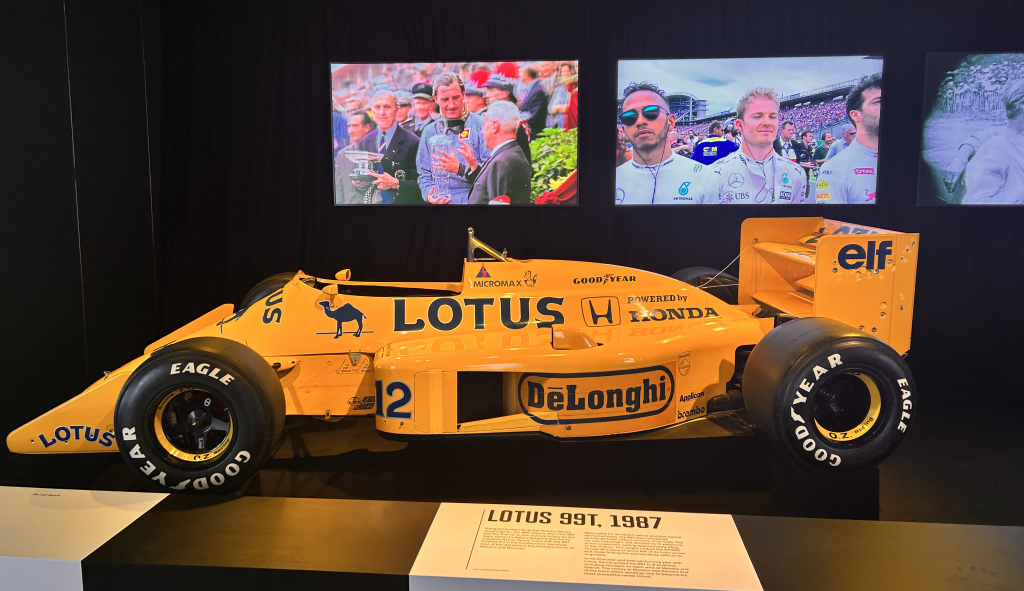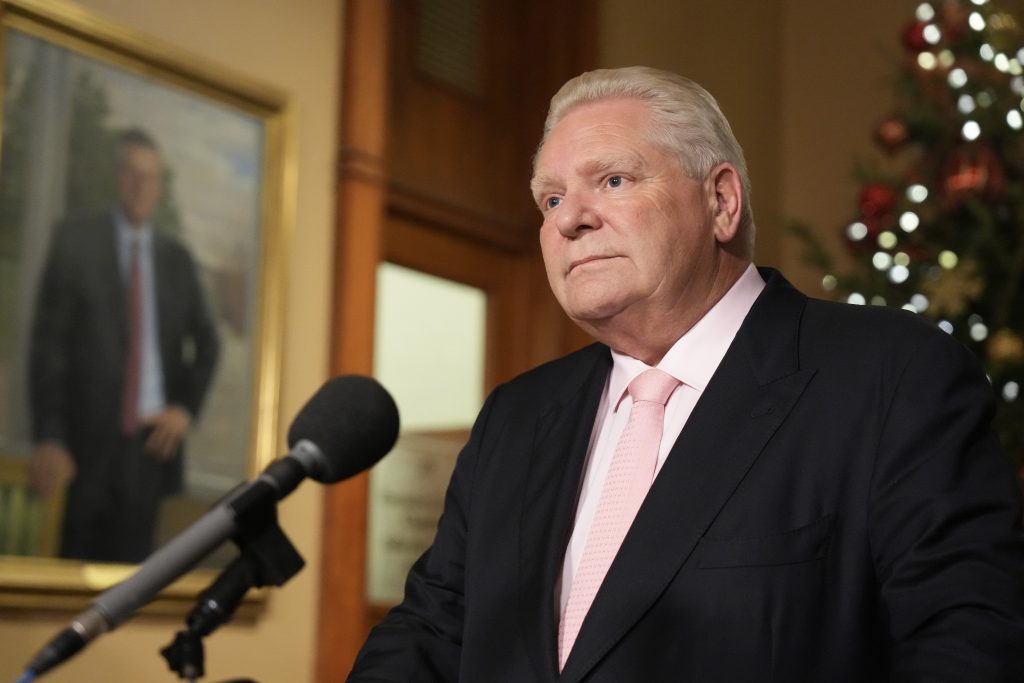Formula 1 Exhibition arrives in North America with Toronto as first stop

Posted May 3, 2024 11:51 pm.
Last Updated May 4, 2024 2:10 am.
From today until mid-July, motorsport fans in Toronto can check out the Formula 1 Exhibition, an interactive experience that features six rooms, four race cars, 96 helmets, authentic car parts, racing simulators and more.
Located at the Lighthouse ArtSpace on Yonge Street, the Formula 1 Exhibition, which had its first edition in Madrid last year and has an active exhibition in Vienna, is making a first-ever stop in North America.
“It’s a new version of the show that’s currently in Vienna, and the opportunity came about because of the positive reaction that we had in Madrid, and subsequently in Vienna, and the decision to come to Toronto was partly as a consequence of the rich history of Grand Prix racing that this country has,” said exhibition curator and producer Tim Harvey.
“We know that there was a deep love of the sport, a really good understanding of the history, and we felt it was a very apt launch city for the new tour.”
Some of the artifacts of the exhibition include a 1987 Lotus 99T driven by Ayrton Senna, who was killed in a crash at the San Marino Grand Prix 30 years ago on May 1, 1994, as well as a 1955 Lancia D50, which took pole position in its first event driven by Alberto Ascari, and Graham Hill’s first World Championship Car, the BRM P578 from 1962.
Other recent additions are one of seven-time Formula One World Drivers’ Champion Lewis Hamilton’s helmets, the Haas VF-20 race car driven by Kevin Magnussen and Romain Grosjean in 2020, which will have the engine cover removed, as well as the remains of the car from Grosjean’s 150 mph crash at the 2020 Bahrain Grand Prix.
“It takes years of relationship building and trust, people who have loaned or gifted items or made them available to us in some way have recognized the underlying intent of the show, to bring to life this amazing history, and to introduce some of the rich storytelling and themes of the sport to a new audience,” said Harvey.
“We’ve always set out for this to be a museum grade, independently curated exhibition that doesn’t try and gloss over any of the history, I think they’ve recognized that this is an editorially important project that should be supported, so we’ve had fantastic support from almost all of the Formula 1 teams, many of the drivers, we’ve captured over 85 new interviews with some of the sport’s greatest personalities.”
The exhibition is made up of six rooms, each that tell a story of the past, present and future of Formula 1 and motorsport. “Once Upon A Time In Formula 1” showcases the early history of motorsport, while “Design Lab” shows visitors how F1 teams design and manufacture each season’s new car. “Drivers & Duels” is dedicated to the iconic drivers, races and battles that have graced the sport.
A tribute to those who have lost their lives in the world of motorsport, “Fallen Heroes” showcases those such as Senna and Canadian driver Gilles Villeneuve who passed while on the track, while the following gallery, “Survival”, covers Grosjean’s crash and his escape from his fiery vehicle.
“I will forever remember the moment when we prized opened the stillage and looked in at the remains of Romain’s car, and we knew that we were looking at a piece of motor racing history, the remains of something that I hope will continue to be shown for many years to come,” said Harvey.
“It’s an important artifact in the show because not only is it a story which has a happy ending, it was by no means a given that he survived that accident, but it also reflects 50 years worth of safety and innovations that has gone on in the sport.”
Across the exhibition are also multiple video interviews with drivers, team principals, F1 analysts and other personalities in the sport, as the exhibition offers headsets for a guided audio tour as part of the immersive experience.
Exclusive to the Toronto exhibition is the “At Shutter Speed Gallery”, which showcases photos of the Canadian Grand Prix taken in Montreal from 2014-2019. At the end of the exhibition comes “The Pit Wall”, an immersive video experience that highlights some of the biggest moments in Formula 1’s history.
“There’s a lot of core fans who come here and know a lot of the details and want even more, and being able to see a modern day F1 car with an exposed engine lends itself well to somebody like that,” said Toronto producer Jonathan Linden.
“But somebody that doesn’t know all of the background and details, maybe they’ve been to a Grand Prix and it was a spectacle and they had a fantastic weekend, but they’re wondering how do you qualify, how does pole work, how do points work for the lower part of the grid.”
The exhibition, which opened to the public today, will run until July 14, with visits available daily except Tuesdays.
“The hope and expectation is people come out of this with a heightened awareness, and that they’re even larger F1 fans than they were before,” said Linden.








